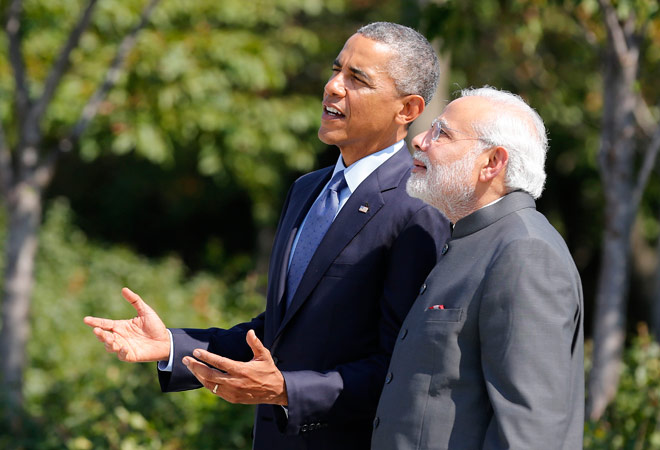Indo-US Relations and its Geopolitical Significance
The Joint Statement, together with the U.S.-India Joint Strategic Vision for the Asia-Pacific and the Indian Ocean Region, and the India-U.S. Delhi Declaration of Friendship, convey the impression that the world’s two largest democracies have reached a common understanding, positing closer cooperation in the future. It also highlights that India’s “Act East Policy” and the U.S.’s rebalance towards Asia, provide opportunities for India, the U.S. and other Asia-Pacific countries to work closely to strengthen regional ties.
Areas of cooperation between India and United States
Several areas of mutual cooperation which includes defence technology and related aspects as well as defence and homeland security cooperation. Developing new areas of technology cooperation, transnational crime, terrorism, narcotics, cyber threats, maritime security and counter-terrorism.
Civil nuclear cooperation is still an unresolved issue, however it looks forward to U.S.-built reactors contributing to India’s energy security at the earliest. U.S. has promised finance facilities worth $4 billion, for which India has committed itself to a transparent taxation regime. Both sides have set their sights on greater trade and investment, and on developing their economic partnership further. The “smart cities” programme got new engagements with some cities adopted by US. Also the administrative arrangement clause relating to the intrusive tracking of material for India’s nuclear reactors, has been waived following a tacit agreement on sharing data with the U.S.
Unresolved issues
Lack of US’s assurances to effectively press India’s case for entry into the Nuclear Suppliers Group (NSG), the Missile Technology Control Regime (MTCR), the Wassenaar Arrangement and the Australian Group. Specific commitments are lacking in climate change segment, bilateral cooperation in adaptation measures and technology innovation.
India’s reliance on Rule 24 of the Civil Liability for Nuclear Damage Rules – 2011 to mitigate suppliers’ liability aspects contained in India’s Civil Nuclear Liability Law of 2010 is likely to inhibit U.S. suppliers from entering the Indian market.
Aspects such as the turmoil in West Asia, the situation prevailing in Afghanistan, Pakistan and parts of South and South-East Asia hardly find any resolve to find a cooperative solution.
Geopolitical implications
The acid test for India would be how to manage the fragile balance that exists between India and China, with China’s growing economic and military strength and its assertiveness.
As some analyst says – India and the U.S. now see each other as a crucial partner in offsetting China’s increasingly assertive role in Asia — marking a significant departure from India’s past unwillingness to forge a common front against China. Redefining the relationship is also seen as a step towards reviving the Quad (a security collaboration arrangement between Australia, Japan, India and the U.S., first mooted by Japanese Prime Minister Shinzo Abe).
With the growing partnership of India and US, China, who avoided taking sides in the dispute over Kashmir between India and Pakistan, on the professed principle of regional issues may take a stand now. China could also exercise a “negative vote” to prevent India’s entry into the NSG. Chinese forays into the Indian Ocean could become more intrusive.


